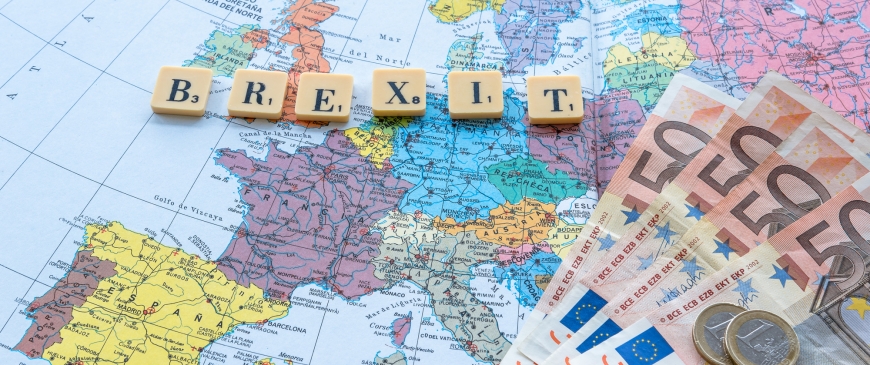
Europe holds all the cards in the Brexit talks
The talks on Britain’s separation from the EU are making progress on the outstanding issues — money, citizens’ rights and the Irish border. When the European Council meets on December 14, it may declare “sufficient progress” and thus allow talks on future relations and the transition to start early next year, as British prime minister Theresa May hopes. But her troubles would be far from over: the future relationship is likely to prove a tougher negotiation than the separation agreement, because the EU will reject what the UK asks for.
The Brexit talks are turning out like accession talks in reverse. When a country joins the EU, the talks are called “negotiations” to humour the applicant. But the EU decides the terms of accession and will discuss only details. Similarly, if Britain wants a separation agreement, it must pay most of what the EU claims it is owed (some €45-€50bn). As for future relations, the red lines set by the British — no freedom of movement, no European Court of Justice and the restoration of regulatory sovereignty — determine the shape of the deal they will be offered.
Some British ministers have a touching faith in the desire of the other 27 members to forge a partnership that maximises economic benefits for all concerned. Unfortunately for the UK, however, the EU’s approach is driven less by economics than by a mix of high principles and low politics. Its principles are to maintain the unity of the 27, the autonomy of its decision-making procedures, and the indivisibility of the single market’s “four freedoms” (of goods, services, capital and people). This means that a country restricting free movement cannot be in the single market. The politics are to protect services firms from UK competition and to steal business in areas such as finance and aviation — while demonstrating to everyone that leaving the EU does not pay. EU officials point out that the UK is not driven by economics, either; if it wanted to minimise the economic damage of Brexit, it would not have rejected the Norway model of staying in the single market.
The British government is not going to publish detailed demands on the future relationship, partly because of its internal divisions. Some voices in London argue that the most realistic option would be to aim for something like the EU’s free trade agreement with Canada and then improve it — leading to “Canada-plus”. But the predominant view is that the UK should request a bespoke model: it would start out closely aligned with EU rules in many areas, so that it had something close to single market membership, but then accept a loss of market access when its rules diverged.
However, Michel Barnier, the European Commission’s chief negotiator, rules out bespoke arrangements or the UK “cherry-picking” parts of the single market. Britain’s red lines, he says, make a Canada-style deal the only viable option. The problem is that this would not suit a service-based economy like Britain’s. The EU-Canada FTA removes most tariffs on goods and opens up public procurement, telecoms and maritime transport. But it does little or nothing in markets crucial to the UK such as aviation, electricity, audio-visual and financial services.
British officials are counting on business lobbies and trade-focused member states to push the commission to be more flexible. So far, however, the 27 remain united behind the hard line set by France and Germany.
EU officials suggest that the best the British could achieve would be Canada-plus, but that any provisions on services would fall far short of single market membership. For example on aviation, says one official, the EU “will offer UK-based airlines fewer rights and freedoms than they enjoy today”. On financial services, the British line that a deal which hurts the City of London would raise the cost of capital for EU firms cuts little ice.
In any case, if the British want Canada-plus, rather than just Canada, they will have to pay for it. The closer they get to something like the single market, the more they will be expected to take ECJ rulings, contribute to the EU budget, adopt EU laws and set minimal restrictions on free movement. A generous UK offer on defence and security co-operation might help to increase the size of the “plus”.
The EU’s top priority is to prevent the UK stealing an advantage by undercutting its standards on tax, the environment, social rights, consumer protection and competition policy. “The UK needs to decide if it is leaving the European regulatory model,” Mr Barnier said recently. “The answer to this question is the key to the future relationship.”
A few months ago EU officials were sceptical that Mrs May could drag her party into accepting the concessions necessary for a deal on separation. Now they are impressed that she has more-or-less pulled off that feat. But they still worry that British ministers appear out of touch with reality: some claim that talks on the future economic partnership can be finished before the UK leaves. Yet the EU insists that only the framework for future relations can be achieved before Brexit, and that detailed trade talks will not start before early 2019. That makes the British belief that only two years are needed for the transition — covering the gap between Brexit and the implementation of the new relationship — seem naive.
Ultimately, however, EU negotiators are cautiously confident that the UK will take an exit deal on their terms — because the alternative is no deal. And they know that Mrs May and her ministers know that, whatever they say in public, any deal is better than no deal.
Charles Grant is director of the Centre for European Reform.
